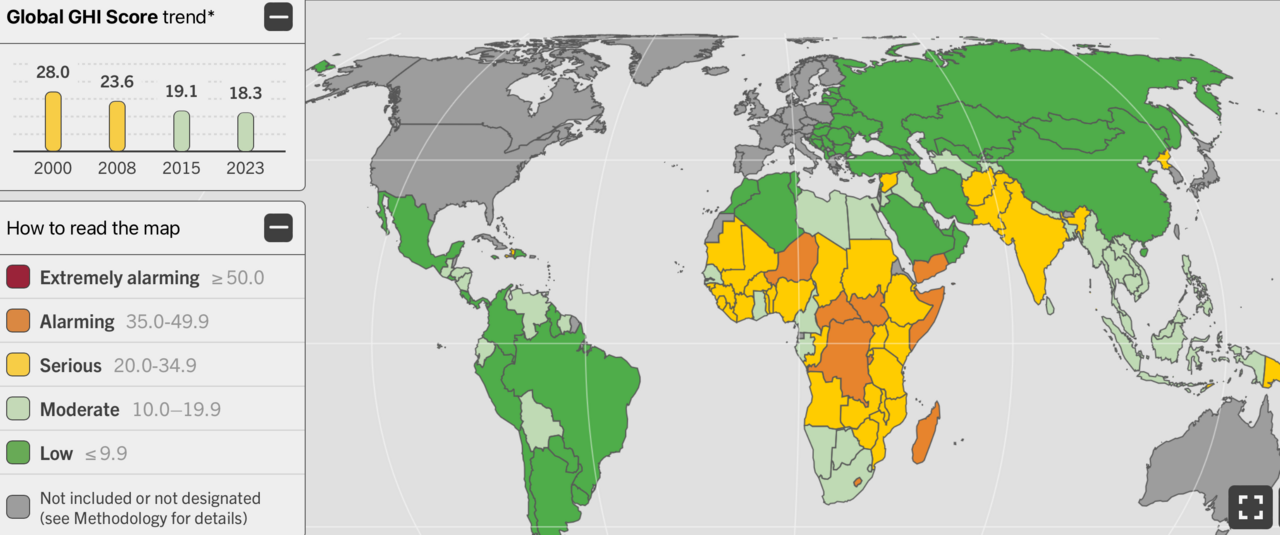The 2025 Global Report on Food Crises has revealed alarming statistics, indicating that acute food insecurity and child malnutrition have escalated for the sixth consecutive year. In 2024, over 295 million people across 53 countries and territories faced crisis-level hunger, marking a 5% increase from the previous year. Notably, 1.9 million individuals were in famine-like conditions, with 38 million children under five acutely malnourished .(Reuters)
Key Drivers of the Crisis
The primary contributors to this worsening situation include:
- Conflict: Ongoing wars and civil unrest have displaced millions and disrupted food production and distribution. In Sudan, for instance, nearly 25 million people are facing extreme famine due to the ongoing civil war .(Wikipedia)
- Climate Change: Extreme weather events, such as droughts and floods, have devastated agricultural systems, particularly in East Africa and parts of Asia. The El Niño phenomenon has exacerbated these conditions, affecting over 96 million people .(Reuters)
- Economic Instability: Inflation and currency devaluation have pushed approximately 59.4 million individuals into food crises, making access to food increasingly unaffordable .(Reuters)
Humanitarian Aid in Jeopardy
The situation is further compounded by a significant reduction in humanitarian aid. In January 2025, the U.S. administration implemented a 90-day pause on foreign aid, including humanitarian assistance, to review foreign aid policies . This decision has led to the suspension of numerous aid programs, affecting millions of vulnerable individuals worldwide.(Wikipedia)
The World Food Programme (WFP) has reported a 34% decrease in funding for 2025, resulting in a 30% staff reduction. This shortfall threatens food aid for 343 million people across various countries . Similarly, other UN agencies, such as UNICEF and UNHCR, have also faced funding cuts, leading to staff layoffs and reduced operations .(DevelopmentAid)
Projected Outlook for 2025
Experts warn that without a substantial increase in funding and international support, the global food insecurity situation will continue to deteriorate. The United Nations has appealed for $47 billion in 2025 to assist 190 million people across 72 countries, emphasizing the need for a surge in political will and adherence to international humanitarian law .(United Nations)
Conclusion
The convergence of conflict, climate change, and reduced humanitarian aid has created a perfect storm of food insecurity. Immediate and sustained international efforts are essential to address the root causes and provide relief to those affected. Failure to act decisively will result in further loss of life and exacerbate global instability.
Global Hunger Index Map Depicting 2023 Data on Wikimedia by Welthungerhilfe & Concern Worldwide



